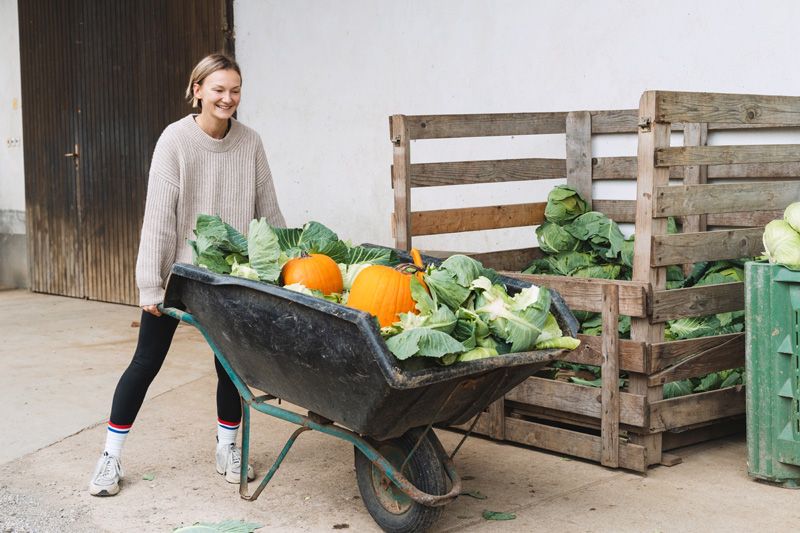
When is it Time To Start Autumn Vegetables
It’s Time To Start Autumn Vegetables
There is a general misconception regarding autumn that everything withers and dries. The only autumn image portrayed is of fallen leaves and bare trees. But wait! autumn also has many growing options, from plants to vegetables. There are certain vegetables that specifically require the autumn conditions to grow. The short days and low temperature help certain autumn vegetables nourish. Autumn is the perfect time to plant your veggies, so they are ready to be harvested before the winter.
Timing is the most crucial aspect of gardening. An interesting fact about autumn vegetables is that they all have large, broad leaves. The reason being days are already short, and the plant needs as much sunlight as it can get to grow. Read on to find out how to grow autumn vegetables effortlessly by yourself. Before that, go through these tips to have the best yield of autumn vegetables.
Tips On How To Grow Autumn Vegetables
1. Prepare the Soil:
Before you plant anything new, it is important that you clear off the ground from previous dead or off-season plants and weeds. Otherwise, the weed absorbs all the nutrients, leaving your autumn vegetables to die. After removing the weed, spade the soil to loosen it up. This breaks any clumps from previous growing. Add a layer of fertilizer and compost to the top of the soil and mix it with the soil. Sprinkle water on the prepared soil, just enough to get it wet, and leave it to rest until the next sowing.2. Watering:
During autumn, the temperature starts going down, and the sun’s hours become less. This means that the water will take time in transpiring and absorbing. Therefore, you should keep the “less is more” strategy while watering. Only water the soil when you see it dry, with a cracked or firm surface. During the start of the growing period, water your vegetables once a week with about an inch of water. It may seem way little to you, but it is more than enough for the plant. After the plantlets have settled, and you see them growing, water them well once a week, instead of light sprinkling every other day.3. Prepare your seeds:
Autumn is transitional weather. It is neither hot nor cold. Therefore it is a good idea to plant the seeds indoors on seed trays and containers. When the seeds start germinating, and seedlings start showing, you can take them out from the roots. Then plant them outside on the recommended distances. It is a good idea to start by planting several seeds for one vegetable. You never know which one is good and which one will not sprout. After some time, when the seedlings show, you can narrow it down to the healthiest of them all. Even if all your seeds germinate, who would say no to extra bundles of fresh spinach or radishes?5 Best Vegetables To Grow In Autumn
1. Radish:
Radishes are among the fastest-growing autumn vegetable. Sow your seeds once and expect to pull out many of these babies in a short span of six weeks. There is no right time to harvest; take them out once they reach a reasonable size. The water requirement of radishes is the same as other plants. Make sure you water them at regular intervals but do not overwater. Moreover, plant them in an area that receives full sun for better growth. Salad radishes like “Cherry Belle” are the most common kind grown in autumn.2. Spinach:
Whatever the size of your garden space, spinach has the tendency to grow to its full potential. They only take five weeks to transform from tiny seeds to big leafy vegetables. A gardener’s tip for you is to harvest them once they grow to an average size. Letting them grow too much may cause them to go bitter. You can grow any variety of spinach in autumn, but the fastest harvest is through large-leafed ones like “Oriental Giant.” Make sure the plant gets full sunlight and keeps the soil moist. You will soon see a hearty yield of crisp spinach leaves.3. Arugula:
What could be better than growing your own arugula for a salad? They grow rapidly, giving you a full harvest in three weeks. You should start pulling the leaves out to increase production. Water the leaves regularly but not excessively. The water should keep the soil moist without drowning the plant roots. Arugula is an autumn vegetable; hence you need to provide them with full sun. The days are already short in autumn, so make sure that your plant gets to soak all the sunlight there is.4. Collards:
A less bitter form of kale, collards are hardcore autumn vegetables that can survive mild frosts as well as high heat. Once the growing cycle starts, they grow rapidly, giving you a huge leafy bed. Furthermore, the autumn harvest is exceptionally juicy and mild in taste. Collards require weekly watering only. They grow well in full as well as partial sun. Hence, you can grow them in your kitchen garden if you have space issues. Just looking at fresh, green, homegrown collards can make you start eating healthy.- Lettuce:
